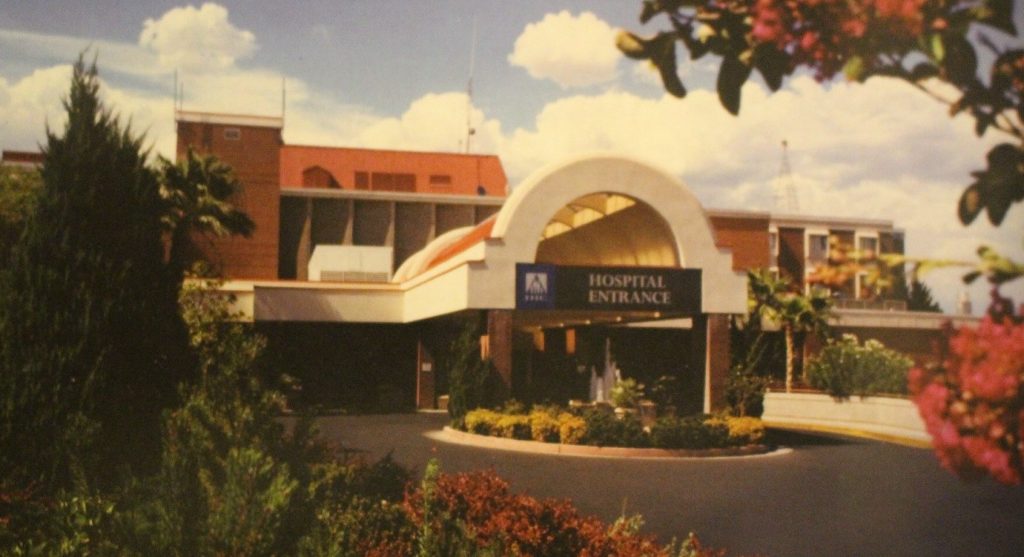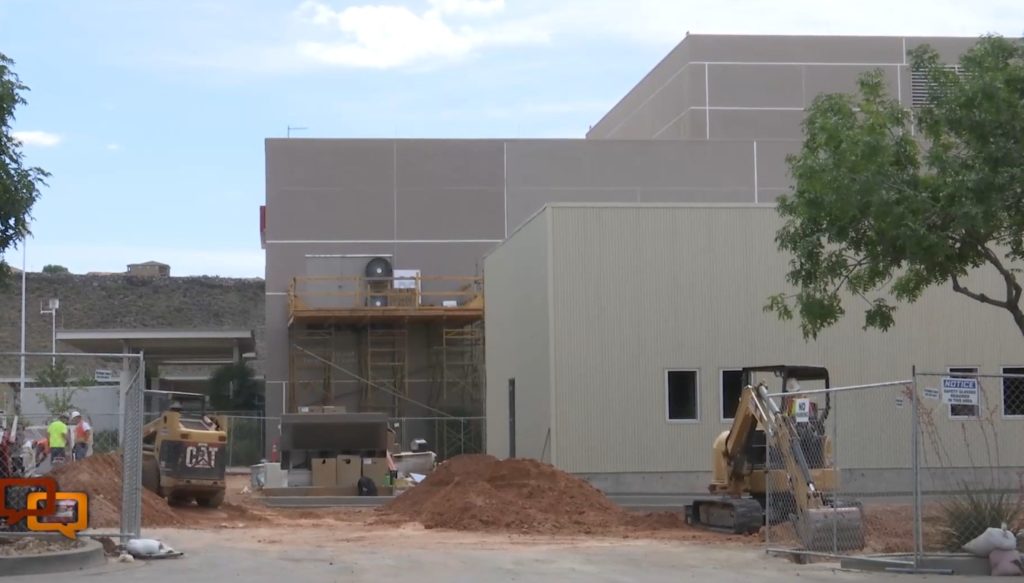ST. GEORGE – When Dixie Medical Center opened in 1975, it was considered a state of the art facility that provided much needed room for expansion. Acquired by Intermountain Healthcare the following year, its expansion continued and today makes up a part of Dixie Regional Medical Center.
Now it’s time for the overall medical facility to make its way for yet another expansion to meet the growing needs of the region.
Dixie Medical Center was built to expand Dixie Pioneer Memorial Hospital. By the 1970s, the old hospital sported 41 patient beds and little room for the expansion of existing services and certainly not new ones.

“It was inadequate,” Dr. Craig Booth said, who started his medical career at the old hospital in 1973.
Booth described Dixie Pioneer Memorial Hospital as being a long hallway where the doctors could holler at nursing staff without needing an intercom system.
In order to accommodate continuing population growth and advancing medical technologies, Washington County residents passed a bond and raised funds for the construction of a new medical center.
Construction started in 1972 on the same block Dixie Pioneer Memorial was situated on, and completed in 1975 with a price tag of $4.5 million.
“It was fantastic to move into the new facility in 1975,” Booth said.
Dixie Medical Center sported four operating rooms, an expanded radiology section and an Intensive Care Unit and cardiac unit that was up to date for the time. It also had an emergency room with separate bays for patients, which the old hospital had lacked.
“This was a major leap forward,” Booth said, “to go from the old Pioneer Memorial Hospital – which was a great facility – to this new facility in 1975. It was state of the art.”
Dixie Medical Center was built with the idea parts of it would be regularly remodeled and expanded in order to accommodate future needs, Booth said.

“We made the comment that there would never be a time we weren’t under construction for something,” he said.
As expected, the expansions and remodeling came, yet they were done under the guidance of Intermountain Healthcare. The group bought the hospital in August 1976.
Dixie Medical Center was the first hospital purchased by Intermountain Healthcare, said Terri Kane, CEO of Dixie Regional Medical Center and vice president of Intermountain’s Southwest Region.
The medical center was acquired for $2.65 million from Washington County, and was done on a promise and a handshake, Kane said.
That promise between the county and Intermountain Healthcare was made between then-Washington County Commissioner Murrary Webb and Intermountain Vice President David Jeppson.
Steve Caplin, chairman of Dixie Regional Medical Center’s Governing Board, said that promise involved Intermountain Healthcare’s keeping pace with new medical techniques and technologies, offering medical services at affordable cost, and providing care for every patient regardless of ability to pay.

“Intermountain has definitely kept that promise and exceeded exceptions,” Caplin said.
Under Intermountain Healthcare’s oversight, Dixie Medical Center expanded the right way and brought in the right people, Booth said.
The hospital would be expanded at least five times in the following decades and the inside remodeled to make room for new medical equipment and the specialists who used them.
A major expansion took place in 1983 for $12.2 million.
The hospital was renamed Dixie Regional Medical Center in 1990. It was given the designation of DRMC’s 400 East campus upon the opening of the main facility on River Road in 2003.
Overall medical services have since been split between the two campuses. Currently the 400 East campus houses women and children’s services, mental health services and cancer services.
Intermountain Healthcare has continued to keep up with the medical advancement and the needs of a growing population. Many specialists now practice at Dixie Regional Medical Center, offering a variety of services for which area residents once had to go to Las Vegas or Salt Lake City.

In 2014 Dixie Regional achieved certification as a level 2 trauma center thanks to the additions of expanded medical services and capabilities.
“We have now, pretty much, all major sub-specialties here in one area,” Booth said, estimating that 90 percent of the hospital’s patients are able to be cared for locally.
Now Dixie Regional is undertaking a $300 million expansion at its River Road campus. It will add four new buildings and add to the existing medical center. Construction begins this summer and is anticipated to finish in 2018. The expansion will add 400,000 square feet to the overall facility.
“There will never be a time we are not building something,” Booth said.
The services currently offered at the 400 East campus will be brought to River Road in order to bring the entirety of DRMC’s medical services under one roof for the benefit of patients, Kane said.
Once all medical services are united at the same location, Kane said, the 400 East location may become the focus of expanding senior services.

The $300 million expansion is a far cry from the $2.64 million Intermountain spent on Dixie Medical Center, yet it illustrates the investment the group has shown to Southern Utah, Caplin said.
The community has reacted in kind by donating of their money and time. Southern Utah residen have donated tens of millions of dollars to Dixie Regional. People have also donated a massive amount of volunteer hours – more so at Dixie Regional than any other other hospital in Intermountain’s system, Caplin said.
“I think 40 years is incredible. It’s gone by very rapidly and it will continue,” Booth said, adding that the span largely encompasses his medical career. The 72-year-old doctor, who calls himself the last of a dying breed as a general practitioner, is retiring this year.
Intermountain Healthcare anticipates holding an official ground breaking for the $300 million expansion in June.
Email: [email protected]
Twitter: @MoriKessler
Copyright St. George News, SaintGeorgeUtah.com LLC, 2016, all rights reserved.